
This aircraft was built in 1939 and known to have flown in the Battle of France. In 1942 it was delivered to the Eastern Front by Arthur Mendl whereupon it was flown by the highly decorated German Pilot Wulf-Dietrich Widowitz (36 victories). On April 4th of 1942 Widowitz was shot down by a Soviet lend-lease (rather, in reality “lend-keep”) Hurricane whilst on an escort mission. Hits to his engine were followed by a forced, near perfect, wheels-up landing on the ice of a frozen lake. The aircraft then sank through the ice and came to rest on the lakebed where it remained untouched until the recovery in 2003. Widowitz died more than a year later during another crash landing.

The base layer of paint on this aircraft is desert-sand brown, even though this aircraft apparently never served in North Africa. There are a number of small-caliber projectile holes in the wings (I presume .30 cal.), some of which entered the wings from above and behind at a very low angle. At least one .30-cal. hole fired from directly below is in the right horizontal stabilizer (shown in the accompanying photos), suggesting that this aircraft also took small-arms fire from the ground. There is what appears to be a very large cannon-projectile hole in the right wing root, fired from above and behind. This may have been the coup-de-gras that took this airplane down. April, 4, 1942 was definitely not a real good day for pilot Wulf-Dietrich source:
forum.keypublishing.com
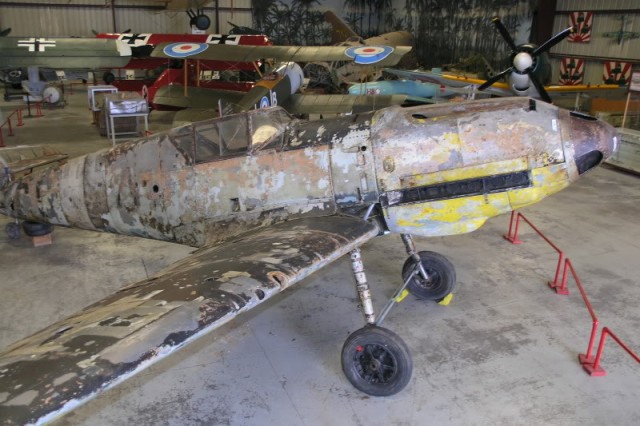
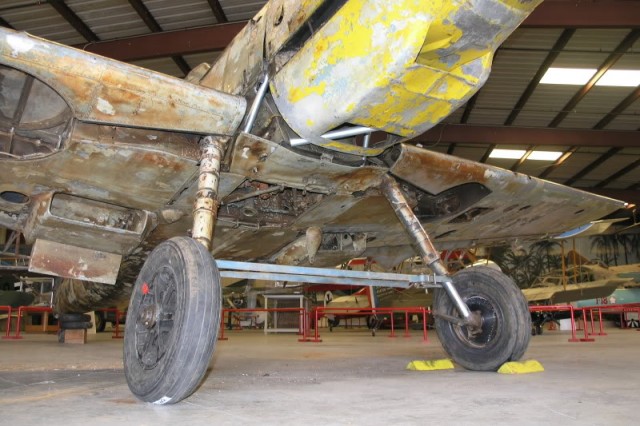
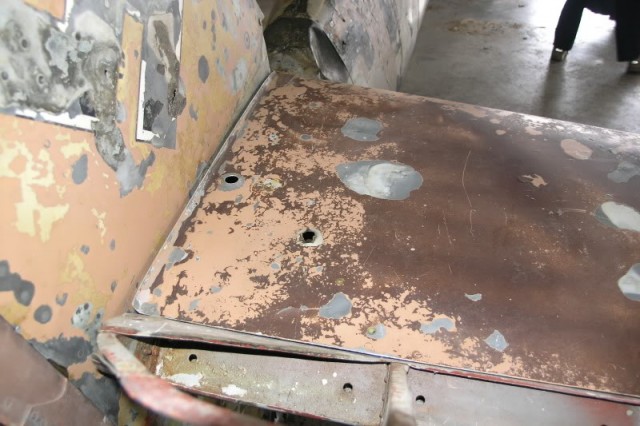
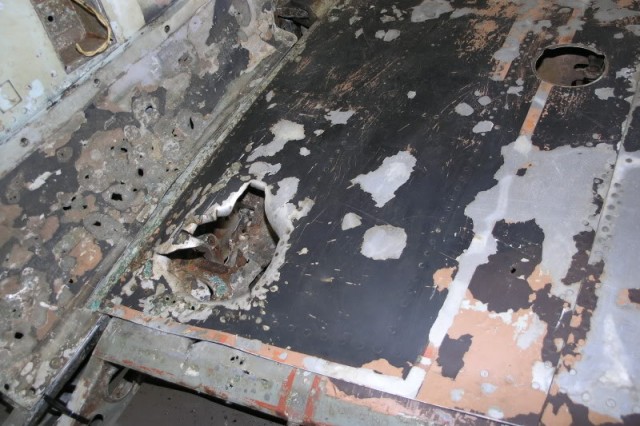
The Messerschmitt Bf 109 was a German World War II fighter aircraft. It was one of the first true modern fighters of the era, including such features as an all-metal monocoque construction, a closed canopy, and retractable landing gear. The Bf 109 was the most produced fighter aircraft during World War II, with 30,573 examples built during the war, and the most produced fighter aircraft in history, with a total of 33,984 units produced up to April 1945.
Planes of Fame Air Museum was founded by
Edward T. Maloney on January 12, 1957 in Claremont, California, to save
historically important aircraft. At that time, it was called “The Air
Museum”. A small group of volunteers, including future Museum
president Steve Hinton, set out to make the museum’s aircraft flyable.
As the Museum’s collection of aircraft and memorabilia continued to grow, it became necessary to find a new home with enough space to house everything. In 1962 the museum relocated to nearby Ontario Airport, Ontario, California.
A few years later, in 1970, redevelopment of the airport at Ontario forced The Air Museum to move again. The non-flyable aircraft became part of the “Movie World: Cars of the Stars and Planes of Fame Museum” in Buena Park, California, located near Knott’s Berry Farm, while the flyable aircraft relocated to Chino Airport, about 30 miles (48 km) away. When Movie World closed, the name “Planes of Fame” stayed.
Planes
of Fame consolidated in 1973, with its static aircraft joining the
flying examples at historic Chino Airport in Chino, California.This was
fitting as the airport was formerly the home of Cal-Aero Academy, which
was an Army Air Corp flight training facility. The academy trained more
than 10,000 pilots prior to the end of World War II, making it a perfect
location in which to restore and give new life to the aircraft these
men had flown into combat more than three decades earlier. As more and
more aircraft were restored and the collection grew, an additional
display facility was opened in 1995 at Valle, Arizona. Located halfway
between Williams, Arizona and the south rim of the Grand Canyon, it
houses more than 40 of the Museum’s aircraft, many of which are also
flyable.
Growth continued at Chino, too, and in 2002 the Enterprise Hangar was opened. Designed to resemble the hangar deck of a World War II Navy aircraft carrier, it contains a number of items from the USS Enterprise (CV-6), donated by members of her crew and flight squadrons. It also houses many aircraft typical of those that served on the Enterprise during the war.
The Chino Facility underwent further expansion in 2004-2008, with the construction of two new hangars, new offices, a gift shop, library and the Hands-On Aviation youth education center. Display areas for jets and other aircraft of the Korean War, Cold War, and Vietnam War were also added. In October 2009 another new hangar was dedicated. It was built by the famous 475th Fighter Group to store their memorabilia, as well as house the Museum’s rare Lockheed P-38 Lightning.
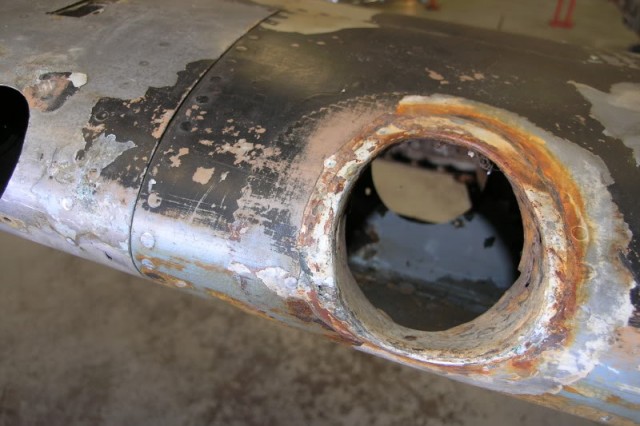
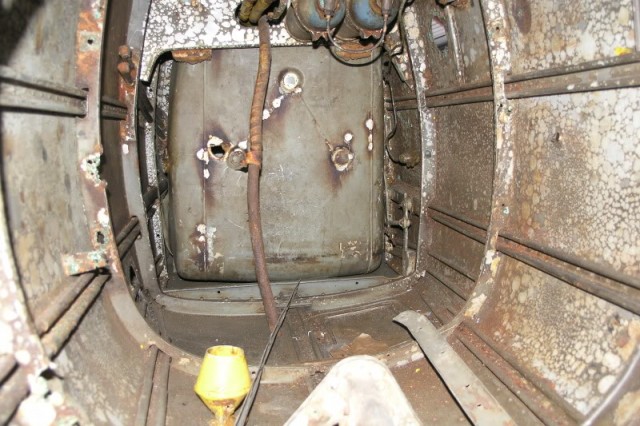
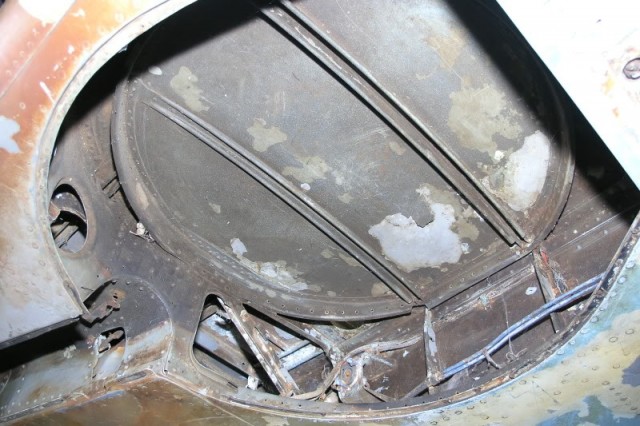
As the Museum’s collection of aircraft and memorabilia continued to grow, it became necessary to find a new home with enough space to house everything. In 1962 the museum relocated to nearby Ontario Airport, Ontario, California.
A few years later, in 1970, redevelopment of the airport at Ontario forced The Air Museum to move again. The non-flyable aircraft became part of the “Movie World: Cars of the Stars and Planes of Fame Museum” in Buena Park, California, located near Knott’s Berry Farm, while the flyable aircraft relocated to Chino Airport, about 30 miles (48 km) away. When Movie World closed, the name “Planes of Fame” stayed.
Growth continued at Chino, too, and in 2002 the Enterprise Hangar was opened. Designed to resemble the hangar deck of a World War II Navy aircraft carrier, it contains a number of items from the USS Enterprise (CV-6), donated by members of her crew and flight squadrons. It also houses many aircraft typical of those that served on the Enterprise during the war.
The Chino Facility underwent further expansion in 2004-2008, with the construction of two new hangars, new offices, a gift shop, library and the Hands-On Aviation youth education center. Display areas for jets and other aircraft of the Korean War, Cold War, and Vietnam War were also added. In October 2009 another new hangar was dedicated. It was built by the famous 475th Fighter Group to store their memorabilia, as well as house the Museum’s rare Lockheed P-38 Lightning.



Sources 1,2

Δεν υπάρχουν σχόλια:
Δημοσίευση σχολίου